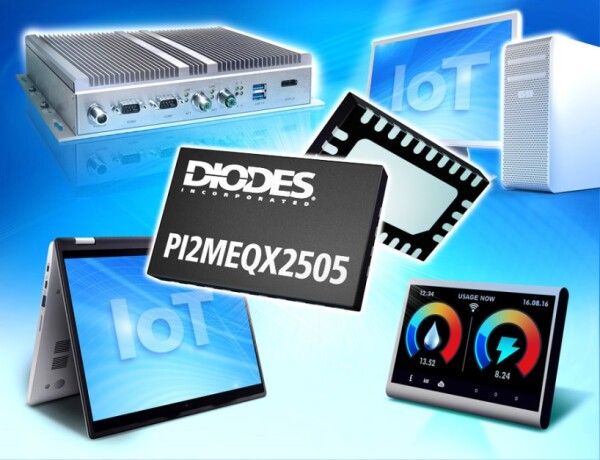ReDrivers™ Ensure Signal Integrity for MIPI-Compliant Cameras
By Raymond Chang, Product Marketing Manager
Today’s high-speed interconnects achieve ever-higher data rates into the Gbps range. However, this introduces more design complexity.
Higher signal frequencies mean there is less signal margin for designers to build reliable, high-performance systems. Wherever a signal must travel more than a short distance, channel losses distort the signal and affect its integrity.
This issue is increasingly critical for printed circuit board (PCB) designers. Although boards may be small, the extra losses added by connectors and flexible PCB sections can become significant. In addition, as processors and other components move to lower voltages, they may not provide enough output drive for the signal to reach its destination successfully.
The best way to solve this problem is, in many cases, to add a ReDriver™. This is an additional component that provides active signal conditioning to compensate for signal loss, thus reducing errors and improving the reliability of communications. ReDrivers provide better performance than protocol-based signal repeaters which must terminate and then retransmit the signal, thus introducing delay and additional system costs[1].
Let’s look at one example application: the MIPI D-PHYSM specification[2], developed by the MIPI Alliance. This specification defines a physical layer for connecting high-performance, low-cost cameras and displays to application processors. In the coming years, MIPI D-PHY-compliant cameras will increasingly deploy in laptop PC systems to support high-resolution images, as well as mobile, automotive, and IoT applications.
Designed specifically for applications compliant with the MIPI D-PHY 1.2 protocol, Diodes Incorporated has launched the PI2MEQX2505 ReDriver. This is a 1.8V low-power, high-performance ReDriver that supports four lanes at data rates of up to 2.5Gbps.

This ReDriver has four differential channels providing programmable fine tuning of receiver equalization, output swing, and pre-emphasis. These features enable longer PCB trace lengths while reducing signal latency and minimizing cost and power.
Optimized for mobile and IoT applications, the PI2MEQX2505 is an ideal solution for designers that require a ReDriver but are also concerned with system power consumption and layout size. It is supplied in a tiny TQFN-28L (ZH) package, measuring only 3.5mm x 5.5mm, to enable high-density channel routing.
The PI2MEQX2505 contains activity-detection circuitry on the D-PHY Link interface that can transit into a lower power mode when in the ULPS and LP power states. The ReDriver consumes 135mW in active mode, 5mW in low-power mode, 2mW in ultra-low power mode, and only 0.2mW in standby mode. This low-power consumption extends the battery life of portable devices that include MIPI cameras, including laptops, tablets, and personal computers.
Whatever the application, if a designer is using the MIPI D-PHY physical layer, a ReDriver is likely to provide a cost-effective and low-power method to ensure signal integrity and to handle long PCB traces and other data pathways.
[1] https://www.diodes.com/products/connectivity-and-timing/redrivers-repeaters/
[2] https://www.mipi.org/specifications/d-phy
The Diodes logo is a registered trademark of Diodes Incorporated in the United States and other countries.
All other trademarks are the property of their respective owners.
© 2023 Diodes Incorporated. All Rights Reserved.